Korean fir "Silberlok": description, planting and care
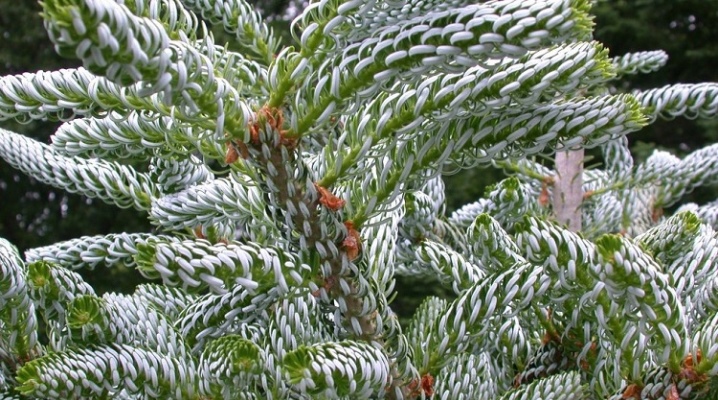
Korean fir "Silberlok" is an excellent choice for the implementation of landscape design projects. The plant is distinguished by its absolute unpretentiousness, has a beautiful shade of needles and a fluffy crown.
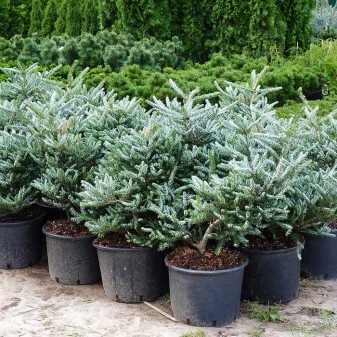
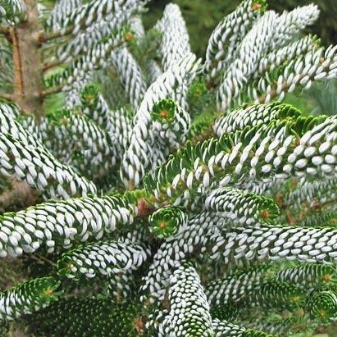
Description of the variety
Korean fir "Silberlock" is the result of selection that appeared in the 80s of the last century in Germany. The height of this representative of conifers reaches two meters, although in some cases the figure increases to 4 or 5 meters. Fir grows by about 9-12 centimeters per year, and therefore the dimensions of 10-year-old plants hardly reach one and a half meters, which refers Silberlok to dwarf crops. Gardeners appreciate this variety for its perfect appearance - the shape is symmetrical and the lush crown is pyramidal. In some situations, when the tip of the Korean fir is damaged, 2 or even 3 tops may form, which does not benefit the aesthetics.
The trunk looks thicker at the base, and closer to the top it becomes tapering. Straight branches look up and only slightly to the sides, forming an acute angle. The bark is colored in a pleasant gray shade. As the fir grows older, cracks appear on the trunk, and the bark itself takes on a brick color. The needles of "Silberlok" look extremely unusual - individual particles are twisted, their back side is painted in a light color, and the top - in a classic dark green tone. Cones grow in the spring only on those trees that have already reached the age of 7. They are painted in a pleasant lilac shade and reach 6 cm in length.

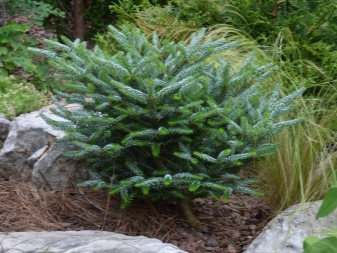
One of the characteristic features of this Korean fir is its ability to withstand the cold temperatures of the winter months. The buds on the tree bloom as soon as the thermometer shows a temperature above zero, and do not die if the frost returns. Since the culture is not afraid of drought, it can be safely grown in the southern regions of Russia. "Silberlok" can grow on neutral, alkaline, slightly acidic and even saline soils, but the plant reacts poorly to the severity of the soil. Ideally, a deep sandy loam or loamy mixture should be selected for this culture.
Korean fir also reacts negatively to excessively moist soil or being in the shade, which results in a deterioration in its appearance. This culture has lived for about 50 years.
It should also be added that Silberlok has no resin channels, and the enzyme is collected on the surface. In addition, the needles of the tree have a pleasant lemon scent.
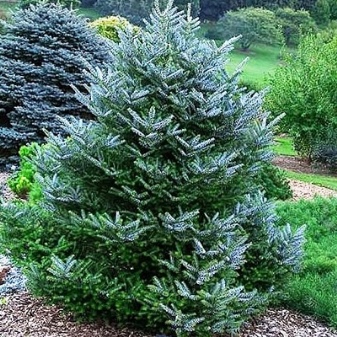
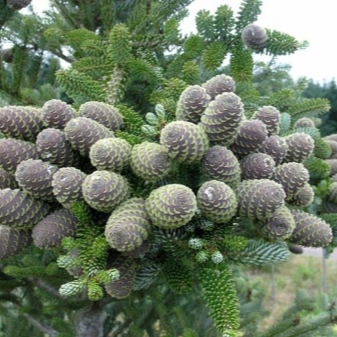
Landing
In order for the planting of the Korean fir "Silberlock" to be successful, it is better to purchase a seedling in a proven nursery, and only one whose age has exceeded the 3-year mark. The material needs to be thoroughly examined - check the power of the rhizome, the smoothness of the trunk, the health of the bark and the neatness of the crown. If your own seed is used for planting, then the roots will need to be disinfected in a 5% potassium permanganate solution or a suitable antifungal solution. The plot for fir is prepared 3 weeks before planting. All the land is dug up, freed from weeds, most importantly, and their roots.
Feeding is immediately carried out using ash and mineral complexes.Experts also recommend adding a mixture of sand, peat and earth with 100 grams of nitroammophoska diluted in 10 liters of water. The hole is dug out in such a way as to fit a particular seedling. To determine the optimal depth, it is necessary to measure the length of the largest root and add 25 centimeters to it.
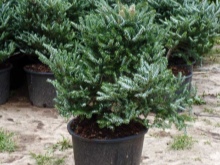
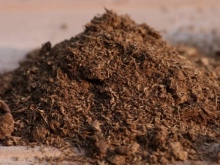

Typically, the depth of the pit is about 80 centimeters. The width is determined by adding 15 centimeters to the dimensions of the root.
The bottom of the pit is filled with a drainage layer formed from coarse gravel, small pieces of brick or river pebbles. One part of the drain is immediately laid out in the hole, and the other is used to build a slide in the center. Fir roots are dipped into a clay solution, after which they are placed along the edges of an impromptu slide. All free space is filled with enriched soil, which is carefully compacted. It is important that at least 10 centimeters remain to the top of the hole - this space will be filled with mulch from bark or sawdust, since it is important to keep the freedom of the root collar.
The planting procedure ends with abundant irrigation. It should be added that the Korean fir "Silberlok" will develop well only if the place is sufficiently lit, not blown through by drafts, and there are no large plants and tall trees nearby.


How to take care of it properly?
Korean fir care is quite simple and commonplace. Only those trees that have not yet reached 3 years of age should be watered, and the sprinkling method should be used. In dry and hot summers irrigation is carried out once every 2 weeks, but if the precipitation itself is carried out according to such a schedule, then Silberlok does not need additional irrigation. An adult plant should not be watered, since it receives all the necessary moisture with the help of the roots. Top dressing is carried out when planting a seedling, and it lasts for about 2 years. For the next 10 years, each spring, the plant will have to be fertilized with a suitable mineral complex.
Loosening should be regular, since this procedure contributes to a better supply of oxygen to the root system, which is necessary for its development. Weeds are removed as they arise. As a rule, the need for these two procedures disappears when the fir turns 3 years old, since the dense crown by this time does not allow the weeds to develop, and the rhizomes are already sufficiently formed.
Mulch is used when planting a seedling, and then in the fall, after hilling, the fir is insulated with a mixture of peat and sawdust, which is covered with straws or dry leaves. In the spring, the area near the trunk is loosened, and the mulch is changed to fresh.

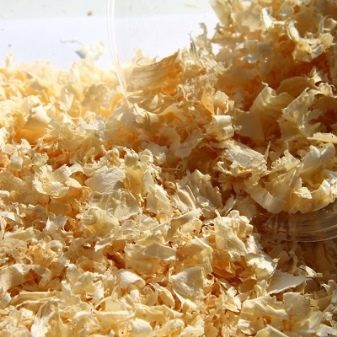
Korean fir "Silberlok" does not need crown formation, as it itself grows beautiful and neat. However, sanitary pruning, expressed in the elimination of dried or diseased shoots, will be useful every spring. To prepare for the winter season for an adult tree, it will be enough to increase the amount of mulch. If the summer was dry, then 2 weeks before frost it is better to carry out water-charging irrigation. Young specimens up to three years old are somewhat more difficult to prepare for cold weather.
First, the seedling is abundantly irrigated, then it is earthed and wrapped in 15-centimeter mulch. The shoots lean against the trunk, covered with a special material and wrapped in twine. In the end, everything is covered with spruce branches, and in winter it is additionally covered with snow.
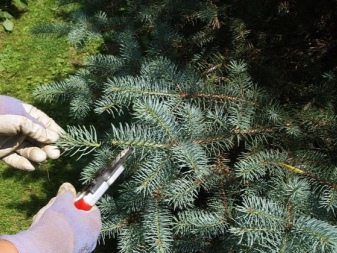
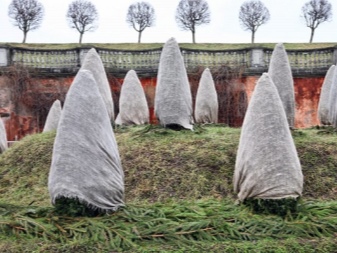
Reproduction
Reproduction of fir "Silberlok" is carried out in several main ways.
Seeds
Using the seed method starts with collecting the buds. In the spring they open and seeds are extracted from the inside. The material is sown in a prepared container with nutritious soil, and after 3 weeks the first sprouts appear, which must be kept in the shade.
Unfortunately, only after 3 years the seedlings will grow enough to be ready for full planting.

Cuttings
To obtain cuttings, you need to cut off 10 cm twigs from the shoots one year old. They are planted in well-moistened sand, and when the roots appear, it will be possible to transplant the plants into separate pots. In these containers the soil mixture should be special, intended for growing. The grown seedlings are ready for full planting in a year.
It is necessary to mention one more method - layering. If the lower branches practically spread along the ground, then rooting occurs naturally. In the spring, the shoots are separated from the main tree, dug up and transplanted to the desired location. In the case when the shoots do not want to go to bed, they should be bent down on their own, fixed with brackets and dug in a little.
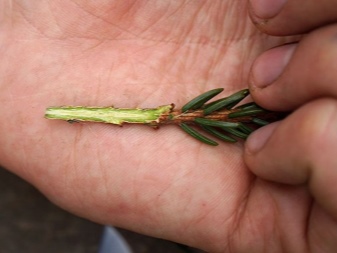
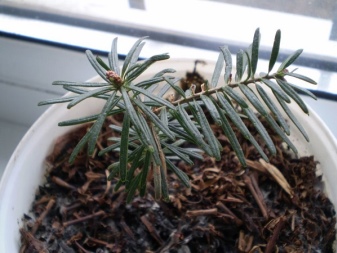
Diseases and pests
Korean fir "Silberlok" is not distinguished by good immunity and quite often turns out to be a target for numerous pests. Fungal diseases are becoming the most common problem, the likelihood of which only increases with improper care or disrupted transplantation technology. The main prevention in this case is the choice of a suitable place and the correct one-time landing. If the fir does get sick, then it is not always possible to cure it, although the use of folk methods is often effective. Pest control is considered even more difficult.
If a light bloom appeared on the bark, then the tree was attacked by the hermes aphid. It will be possible to treat the culture only with the help of insecticides, but for prevention, the use of such siderates as spruce and pine is suitable.
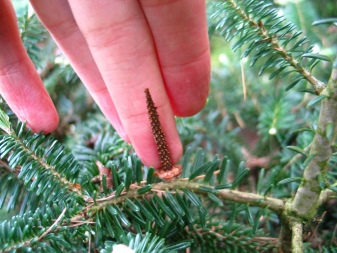
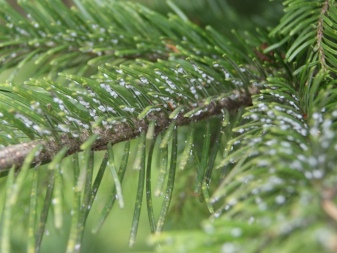
Sticky drops of a brown shade are an indicator of the habitat of the scabbard on the needles of a tree. To get rid of in the spring, the fir will have to be dressed in a bag treated with an anti-caterpillar agent. About the emergence tick you can guess by the appearance of a thin cobweb on the crown of a tree. Since the tick often appears during drought, for prevention it is recommended to water not only the ground, but also the needles. You can fight the tick with an infused mixture of garlic and dandelion, which is used to treat damaged areas.
Constant waterlogging of the root system leads to the spread of rot, red-brown or variegated. You can determine this by looking at the needles, which turn yellow and crumble. It will be possible to fight the disease only with the help of "Fundazole" or a similar agent.
With a profuse lesion, the fir will have to be destroyed in order to avoid the spread of infection.


Use in landscape design
Fir "Silberlock" is especially loved by landscape designers, as it is inexpensive, but it looks amazing. Trees are used both individually and in combination of several specimens. Korean fir can be planted in straight lines next to the paths to form an alley, or it can be used to emphasize any boundaries of the flower arrangement.
The tree looks good as a background for a lawn or alpine slide, as well as a tapeworm in the middle of a lawn or flower bed. It is customary to combine "Silberlock" with barberry, birch, thuja or juniper bushes.
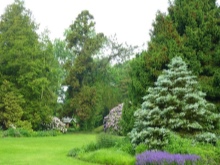
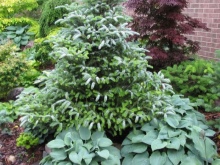
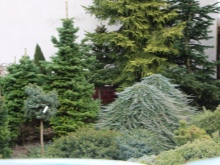
In the next video you will find additional information about the Korean fir "Silberlock".



































































The comment was sent successfully.